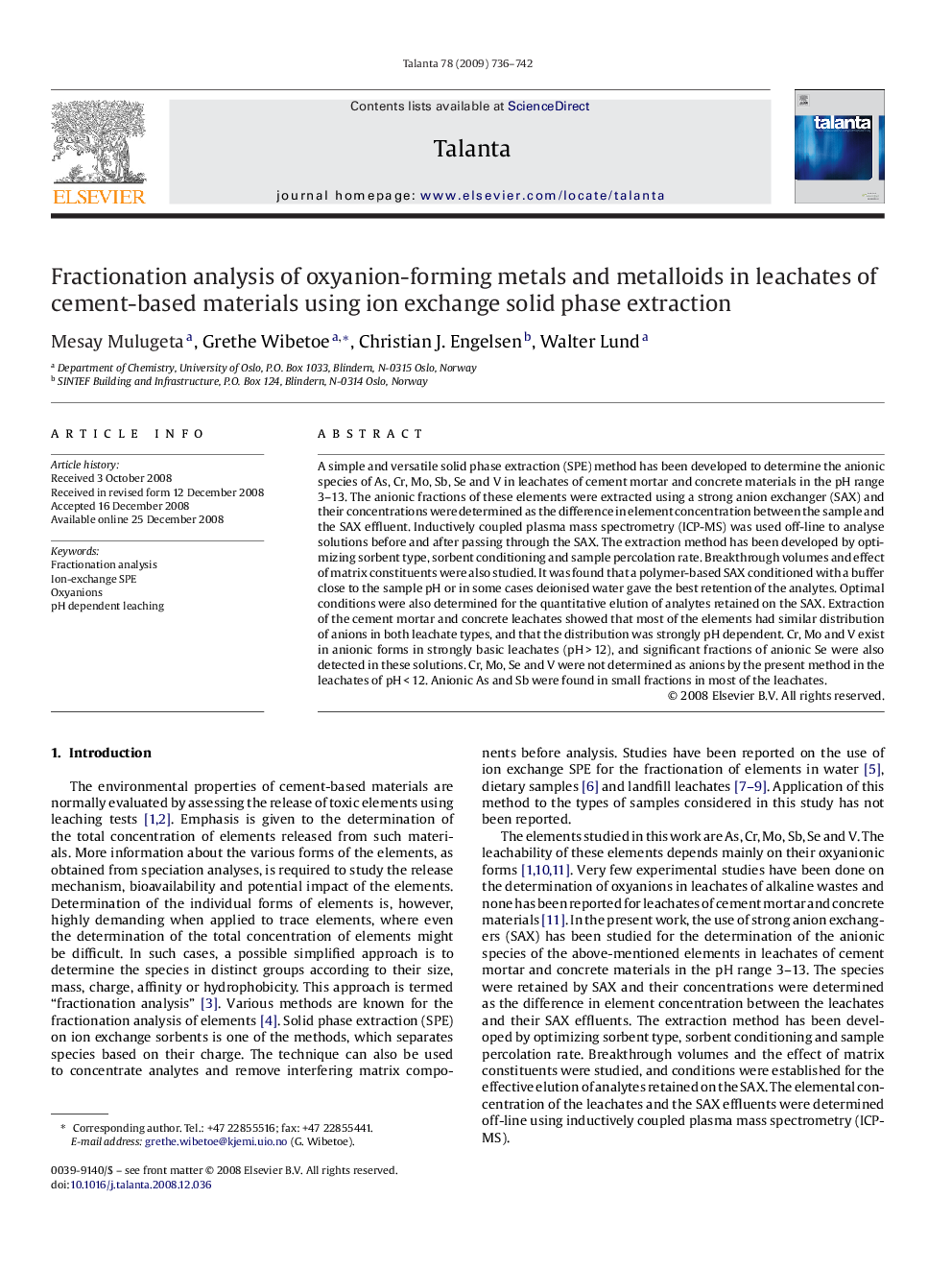| Article ID | Journal | Published Year | Pages | File Type |
|---|---|---|---|---|
| 1244895 | Talanta | 2009 | 7 Pages |
A simple and versatile solid phase extraction (SPE) method has been developed to determine the anionic species of As, Cr, Mo, Sb, Se and V in leachates of cement mortar and concrete materials in the pH range 3–13. The anionic fractions of these elements were extracted using a strong anion exchanger (SAX) and their concentrations were determined as the difference in element concentration between the sample and the SAX effluent. Inductively coupled plasma mass spectrometry (ICP-MS) was used off-line to analyse solutions before and after passing through the SAX. The extraction method has been developed by optimizing sorbent type, sorbent conditioning and sample percolation rate. Breakthrough volumes and effect of matrix constituents were also studied. It was found that a polymer-based SAX conditioned with a buffer close to the sample pH or in some cases deionised water gave the best retention of the analytes. Optimal conditions were also determined for the quantitative elution of analytes retained on the SAX. Extraction of the cement mortar and concrete leachates showed that most of the elements had similar distribution of anions in both leachate types, and that the distribution was strongly pH dependent. Cr, Mo and V exist in anionic forms in strongly basic leachates (pH > 12), and significant fractions of anionic Se were also detected in these solutions. Cr, Mo, Se and V were not determined as anions by the present method in the leachates of pH < 12. Anionic As and Sb were found in small fractions in most of the leachates.
